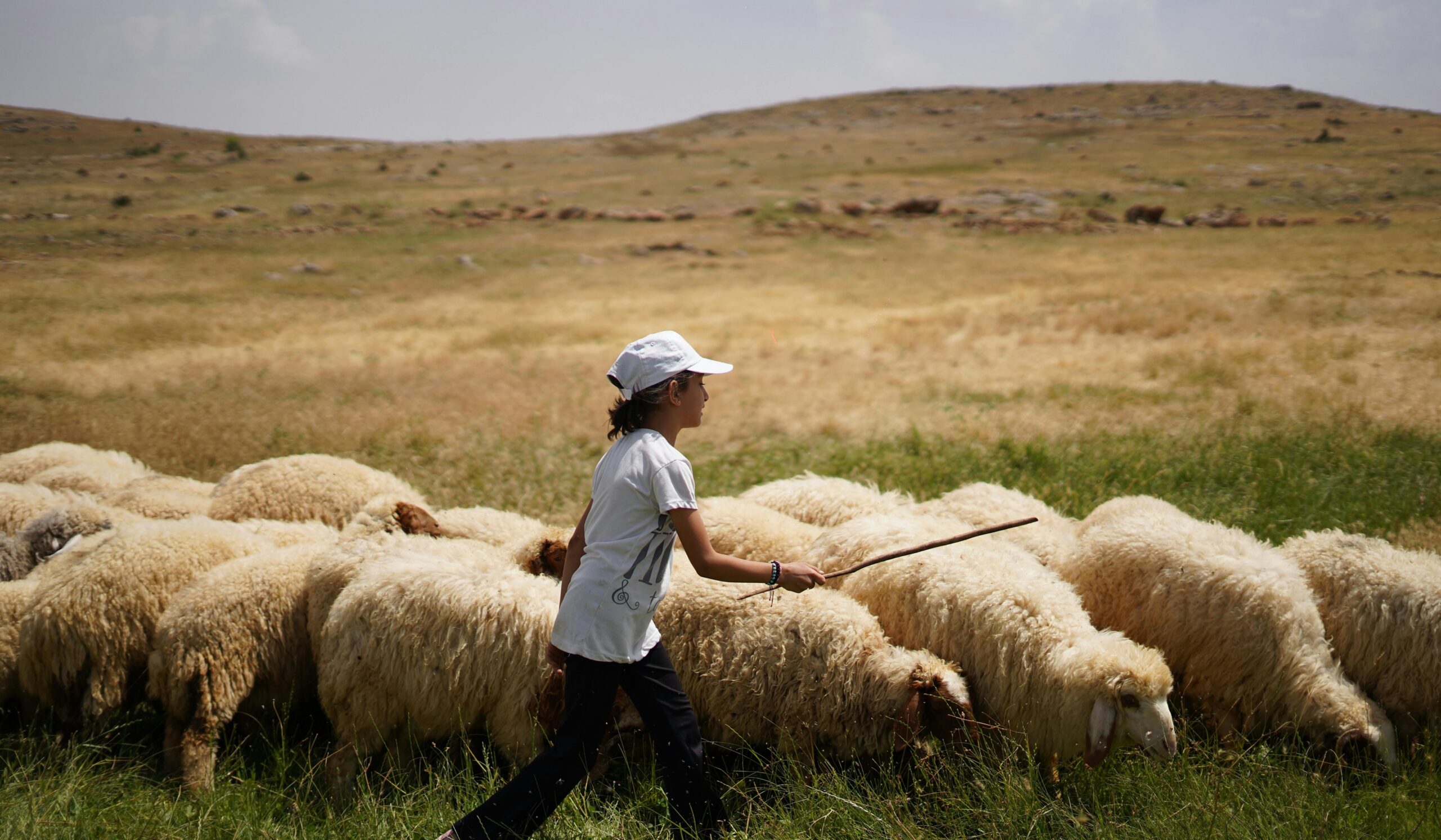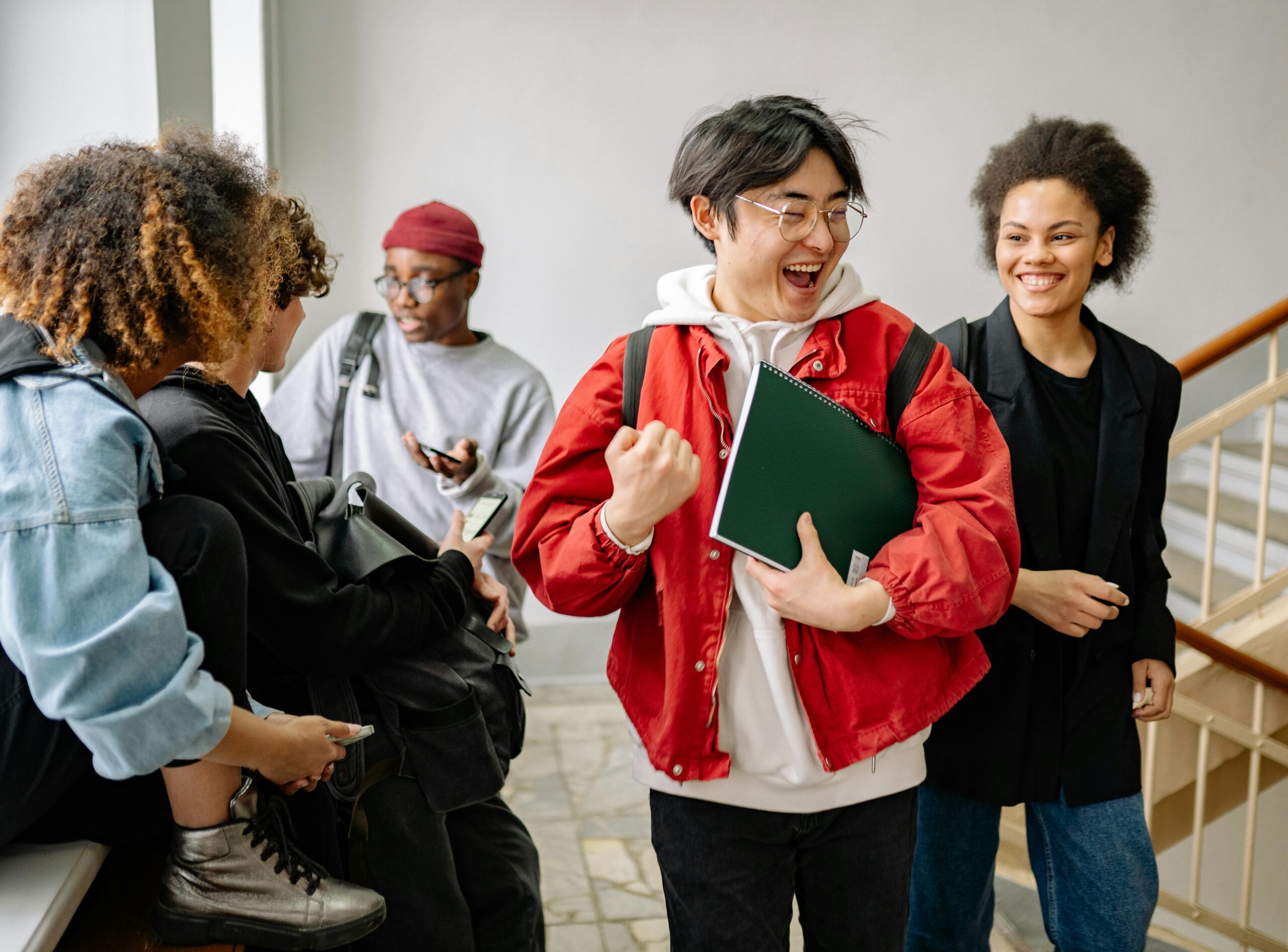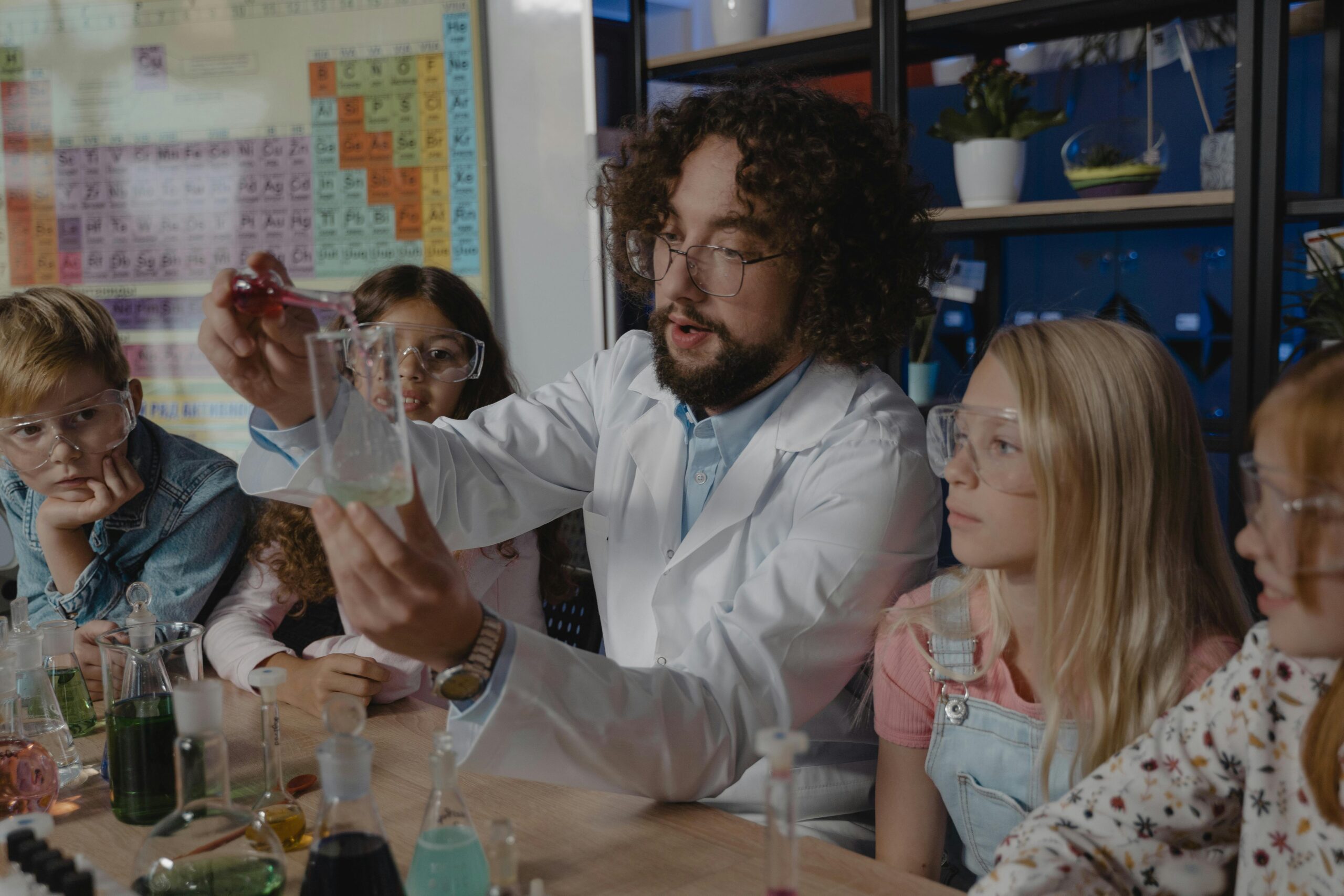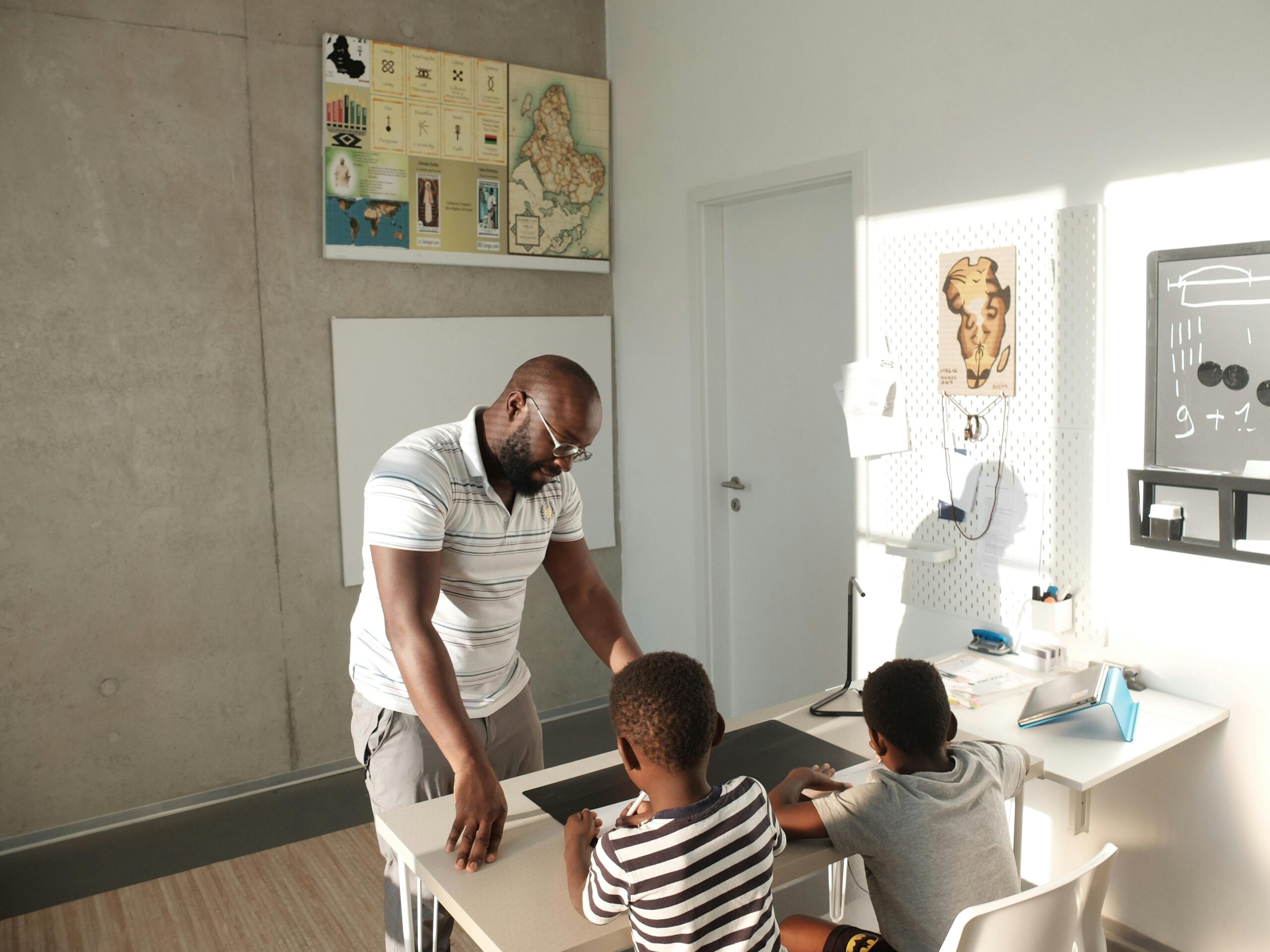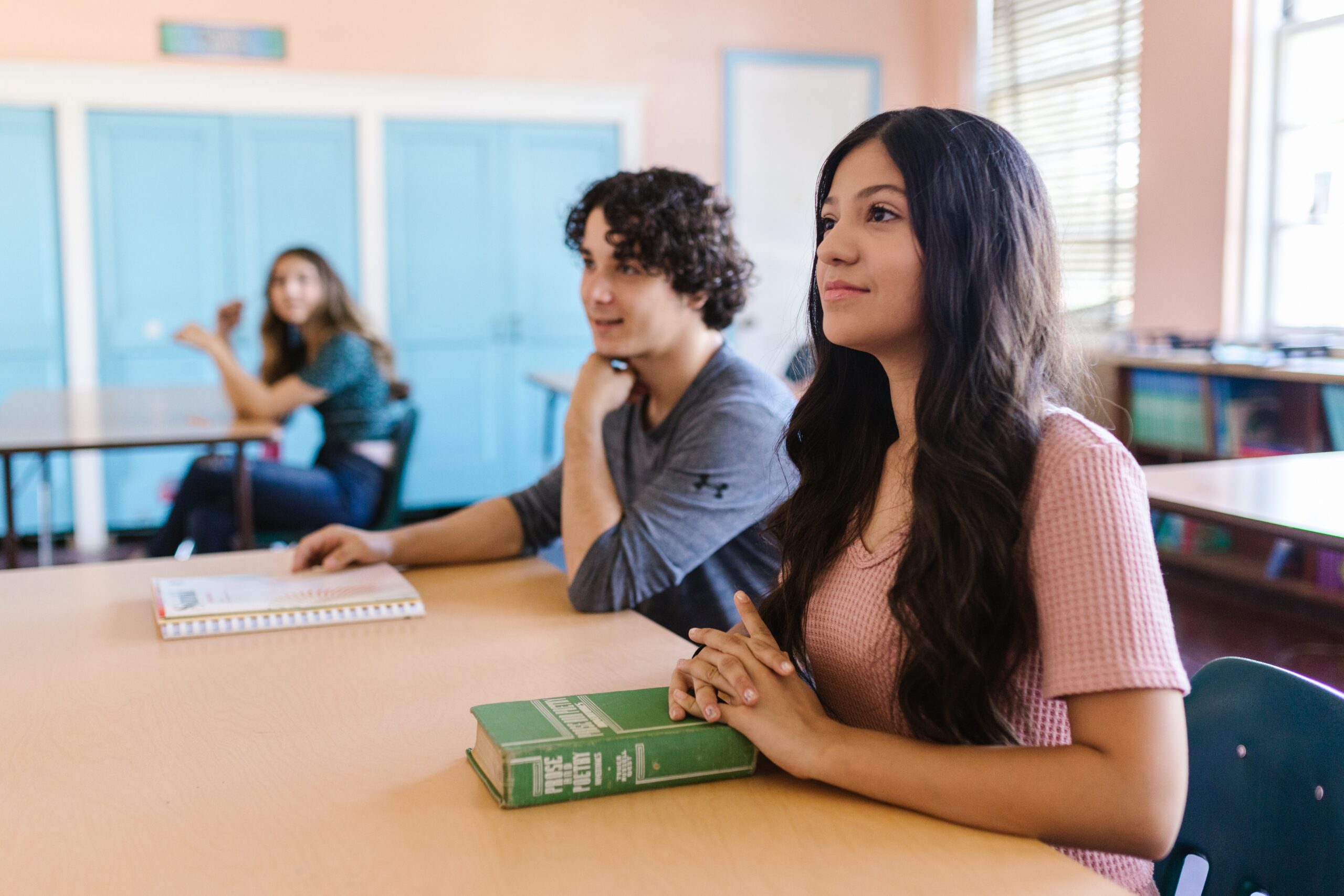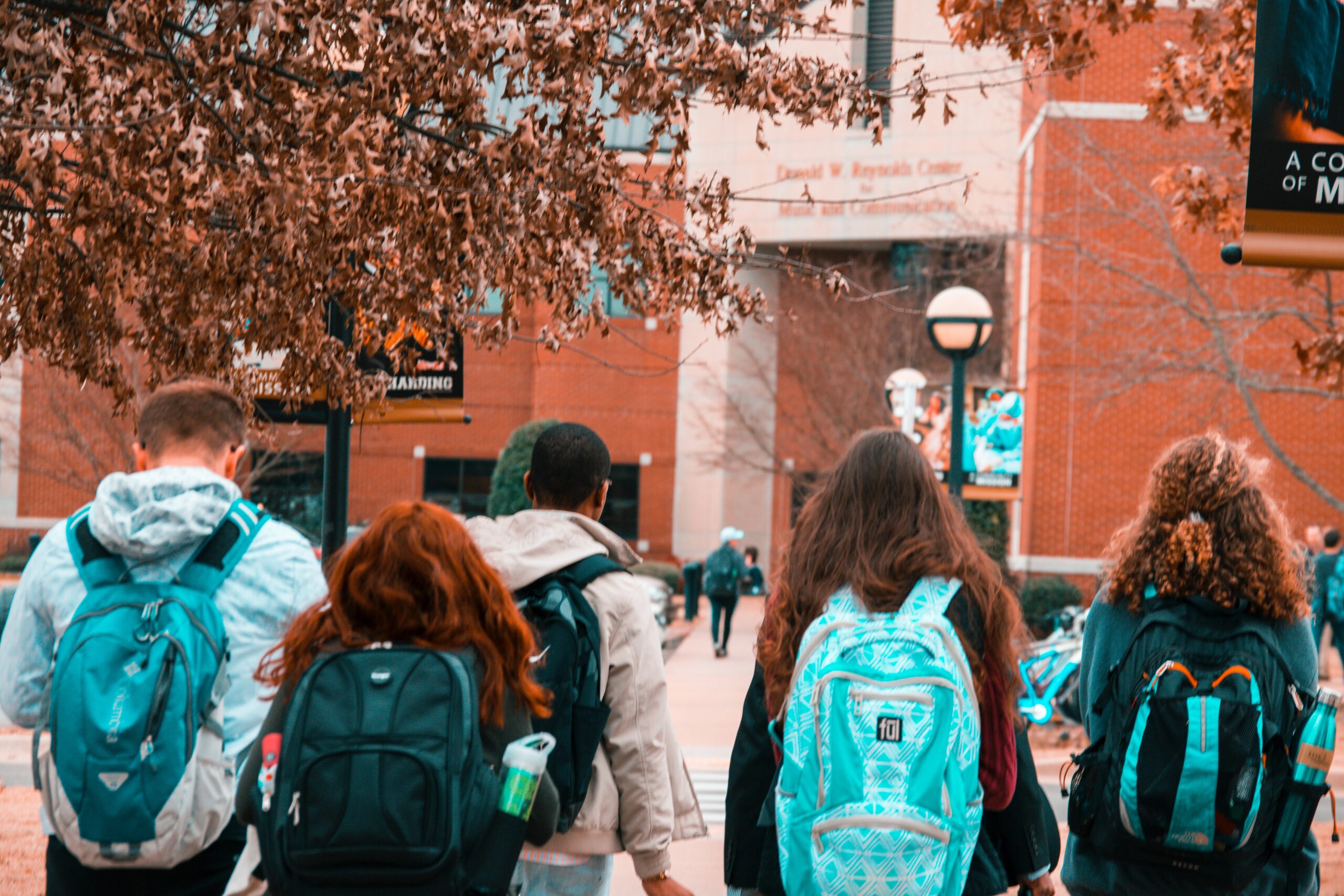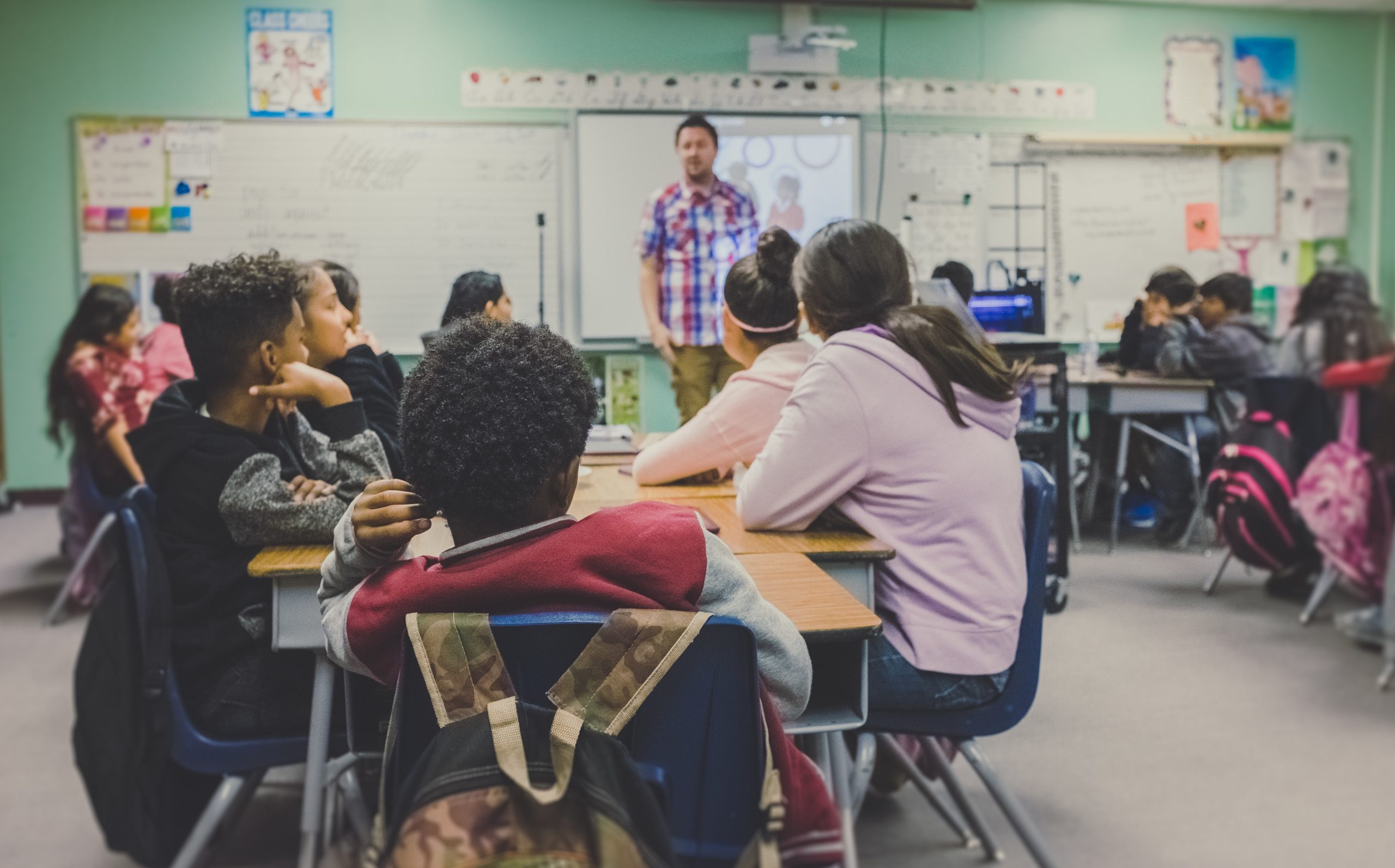Five Ideas to Take Classroom Engagement to the Next Level
By Patrick Erwin The transformative power of a great mentor is truly remarkable. One such mentor in my life is Dennis Fisher, a professor emeritus at the University of North Texas. His teaching and mentorship not only made me a better teacher and leader but also ignited a passion for music education. I vividly remember a time when he visited my
Five Actions to Help Your Kids Think for Themselves
By Tim Elmore I read a publication years ago that said 70 percent of Americans do no thinking on their own. I was never able to locate the source of this data, but my own experience verifies it. I assume the number means that the average person relies on commercials, referrals, endorsements, or reviews to help them make decisions. People don’t
The Santa Claus Clause: 3 Ways to Infuse Joy into Your Job This Holiday
By Patrick Erwin I can distinctly remember waking up in the early hours of the morning as a young child and running down the hallway to see what Santa had brought. What would be the big gift this year? Would it be a bicycle? A gaming system? The suspense was too much to hold us in our beds, and so it
What Is Our Purpose as Educators?
By Tim Elmore During a Q&A session with an audience of 700 secondary educators, one math teacher raised his hand. His question for me was revealing: “What should I say,” he inquired, “if students ask me if they will ever use this stuff after graduation?” This was an AP math instructor with gifted students. Yet his question revealed that he had no
If They’re Laughing, They’re Listening
By Patrick Erwin In my 17 years of teaching, my students used to tell me that I had two major flaws. First, I don’t listen very well. Second… well, I don’t remember. One thing I do remember is how my sixth-grade English teacher made class fun. Ms. Bickford was an older teacher, but I loved how she didn’t take herself too seriously.
Cultivating Student Success When the Grass Looks Greener
By Michael Kobito To many, student success is measured by how impressive a child’s resume is as they prepare competitive applications for college admission. I saw this repeatedly as a high school band director. I spent most of my time teaching ninth through twelfth-grade students and was fortunate to help at our local middle schools, easing the transition for the students
Bloom Where You’re Planted
By Kara Mallory I was twenty-seven when I accepted my first teaching job. Being five years into another career, I was excited to venture into the world of the classroom. I also knew, however, that I had some growth ahead of me. I was like a fragile flower yearning to bloom but nervous about the bad weather I might soon face.
Your School Has a Superpower. Are You Using It?
By Patrick Erwin I LOVE Sci-Fi movies. Growing up, my parents watched a lot of Star Trek, and I got hooked on Star Wars. More recently, it’s easy to assume that nearly everyone has seen Marvel or DC movies. In all of these series, we find characters with extraordinary abilities. As part of my fascination with this subject, I found
The Chief Skill Employers Want Isn’t in a Textbook
By Tim Elmore Several years ago, I met with Rich Katt, Cory Epler, and their team at the Department of Education in Nebraska. Our focus was Career and Technical Education. We were determined to create a resource that would cultivate career-ready graduates based on Nebraska’s twelve career-ready standards. We wanted it to be different from any other curriculum we’d seen. In those
Helping Students Stop Phoning In and Start Buying In
By Michael Kobito As a teacher, my students were either excited by or puzzled by the constant positive energy I brought into the classroom. My first block class always accused me of having an entire pot of coffee before class started, as if that would be the only explanation for my cheerful demeanor. Whether it’s exciting or puzzling, this is just
Four Lessons We Can Learn From Kids
By Kara Mallory My daughter and I have, in many ways, grown up together. Most of my friends were still learning about their passions from textbooks. They took on study abroad semesters, with many still having mom and dad pay most of their bills. I had just turned twenty and was learning from sleepless nights, Sesame Street, play, and caring for
Advice for School Leaders: Start With Why. But Don’t End There.
By Patrick Erwin One of my favorite books on leadership is Start With Why by Simon Sinek. In it, Sinek reminds us that purpose inspires action. When there is no joy in the impact that you are making, or perhaps you just forgot about it, then passion for work is easily lost. However, we often make the grave mistake of merely
One Aspect of Parenting that Completely Changed My Classroom
By Kara Mallory When my three kids were particularly fussy as infants, my husband would take them outside. He’d walk across the backyard or sit on the front porch, and most of the time, they would begin to settle. As those babies grew up, when we reached the long and tiring toddler years, my solution for cranky toddlers was to take
Research that Informs Your Decisions This School Year
By Tim Elmore One of my most common concerns is to miss important information when making decisions. I don’t want to feel I’m in the dark on the data. I want to make informed choices. Below, I have curated recent findings from the Pew Research Center, Gallup, the CDC, and other sources to give you a big-picture vantage point on life
Teacher Life Hacks: Two Strategies to Increase Student Engagement
By Tim Elmore Dennis Cook was one of my teachers during my junior year of high school. He was a very effective educator. Upon reflection, I can see now that Mr. Cook focused on connections in his classroom as much as the coursework. By taking time to do this, he accelerated our learning and growth. Mr. Cook practiced valuable tenets of behavioral
How to Simplify Students’ Lives Without Making Them Easier
By Tim Elmore Jamie teaches English Literature to high school seniors. She’s also a mother of two teens, so she sees the stress levels of young people today from both angles. She knows deep down that kids need a little stress to perform at their best, but she hates witnessing such anxiety in them. It’s a common narrative: we see students stress
Three Strategies to Help Teachers Recover Their Joy
By Andrew McPeak Today’s blog is an excerpt from the upcoming book, “Ready for Real Life.” You can order “Ready for Real Life” by Andrew McPeak today by clicking here. Several months ago, I heard the story of Kiffany Cody. Cody is a special-education teacher in Gwinnett County, Georgia, near where I live, and she faced many challenges during the pandemic
A Fresh Strategy for Students to Beat Anxiety
By Tim Elmore The numbers keep climbing. Both adults and students are suffering from anxiety levels that are worse than any period we’ve ever seen, including the Great Depression. More than 8 in 10 students admit to struggling with anxiety or depression on a regular basis, and adults report numbers have jumped from 11 percent in 2019 to 41 percent in
Two Important Social And Emotional Skills for Academic Success
By Andrew McPeak Growing up, David Aguilar was obsessed with LEGOs. Like many kids he would build creations utilizing his imagination, but unlike many kids David was building to solve a specific problem: he had been born with only one hand. David was born with a specific genetic condition called Poland Syndrome, which caused his right arm below the elbow to not
The Difference Between Rookies and Veterans at Work
By Tim Elmore Do you see stereotypes at work today? You know what I mean, don’t you? On the one hand, Millennials and Gen Zers assume that Baby Boomers are just “out of touch with reality.” On the other, we hear Gen Xers and Boomers assuming all young people are entitled and narcissistic. = Stereotypes exist for a reason, but far too
Skills Today’s Graduates Need to Succeed
By: Tim Elmore I graduated from college with good grades, but not straight As. Part of the reason was, I worked two or three jobs every year of my college life. I worked as a cook in a country club, I worked part-time in the library, I worked as a part-time youth director, and I worked at a fast-food restaurant. While
Three Ingredients to Help Students Recover Following a Pandemic
By: Tim Elmore Today’s kids were already facing mental health problems. Now they feel delayed by COVID-19, and it’s added to their anxiety levels. According to Barna’s research, 82 percent of Generation Z members believe they’ve been traumatized. While it sounds extreme, many of them feel: Postponed Pushed aside Penalized. This group of teens believes part of the traditional American experience was lost
The Story of the Carrot, the Egg, and the Coffee Bean
By: Tim Elmore A young girl went to her grandmother and complained about how hard life had become for her. She did not know how she was going to make it and wanted to give up. She was tired of fighting and struggling. It seemed that, as one problem was solved, a new one arose. Her grandmother took her to the kitchen. She
How to Teach Social and Emotional Skills Without Being a Therapist
By: Tim Elmore Last month, I asked a group of educators a question, and the answer was revealing. A group of 21 teachers who use our Habitudes for Social and Emotional Learning all said they enjoyed the classroom conversation our images sparked but admitted: “Whenever I teach social and emotional skills, it inevitably brings up emotional issues like conflict resolution or anger management.
The Drift We’ve Witnessed in Education
By: Tim Elmore When I spoke to Mr. Dunn, an English teacher of high school seniors, he told me he had one job: to teach language arts to teenagers. My first response was to agree. He had but one task each day, and he was doing a good job of it. When I reflected on the history of education in America, I recognized
How to Read a Book
By: Tim Elmore Almost everywhere we go, people ask the questions: How do you read so many books? Where do you find the time? Just how do you read a book? Do you read it from cover to cover? The fact is these questions stem from the belief that leaders are readers. By and large, if you plan to be a lasting
One Secret Parents Can Use to Send the Best Versions of Their Kids to School
By: Tim Elmore I spoke to a clinical psychologist recently, after an arduous day with clients. Helen is a counselor who sees families for therapy every day. She revealed a tool to me that was so simple I asked her to repeat it. She called it a “secret” because so few parents know it or apply it—but it’s within the reach of
A Commitment for Educators: Being Fully Present in the Moment
By: Tim Elmore We all imagine a perfect life from time to time. What would it be like if we had no worries, all the pleasures life could offer, all the friends one could hope for, and all the resources we’d ever need? We can dream, can’t we? May I remind you of a true story? In 1993, Joan Ginther won the lottery while
One Secret to Take Full Advantage of Your Holiday Break
By: Tim Elmore Several years ago, in a remote area of a country in Africa, local villagers discovered that some young elephants wandered from the herd. They were lost for some time. When those pachyderms were returned to their families, they were no longer babies. They’d changed over time. Researchers, called Mahouts, made some fascinating observations as they watched these stray
How to Help Students Beat Stress and Welcome Pressure
By: Tim Elmore Jana Davidson teaches seventh-grade science and tenth-grade biology. Every day, she observes students entering her classroom feeling stressed out. Many of them feel overwhelmed. Anxiety has been normalized thanks to social media and a pandemic. When I asked Ms. Davidson how she helps her students manage their stress, she told me she assumes the best way is to take
Why Millennials and Generation Z Students Are Choosing Control Over Caution
By: Tim Elmore I don’t know if you’ve noticed, but teens and young adults today have been in a funk for the last several years. Mental health continues to be an issue in the aftermath of the COVID-19 pandemic. However, since 2017, I’ve been watching a trend that encourages me. This overwhelmed population of young people (middle school, high school, and college
The Inverse Relationship Between Gratitude and Entitlement
By: Tim Elmore I’ll never forget the day a university professor told me a student approached him after making a poor grade on an exam. The student reasoned that because his parents paid full tuition, he deserved an “A.” Wow. Sounds like a customer, vendor transaction, doesn’t it? His mom and dad were buying a good grade, rather than a chance
How Masks Can Deepen Social and Emotional Learning
By: Tim Elmore I don’t know about you, but I am seeing more and more face masks on the ground these days. Whether it’s in a parking lot or restroom or at a shopping mall, people seem to be sending the message: “I’m through with these masks!” Yet, with the surge of infections due to the Delta variant, many schools, restaurants, and
Advice to Teachers and Parents When Guiding Teens on Instagram
By: Tim Elmore Anyone who cares about young people should see the data just revealed on Instagram and its parent company Facebook. Millions of teenagers, mostly girls, have spiraled into symptoms of depression and despair after spending time on these platforms. The data seems to indicate the connection between depression and Instagram is not just a coincidence. One teen, Anastasia Vlasova,
Struggling to Establish Both Relationships and Accountability with Your Students? Try Using a Social Contract.
By: Andrew McPeak Just a few weeks ago, I stood in front of almost a hundred teachers — the faculty of a mid-size high school in North Dakota. Together, we discussed methods for connecting with and leading students, and the changes that leadership in the 21st-century classroom requires. We talked about everything from student engagement, to student ownership, and even experiential
One Magical Idea to Increase Student Engagement This Fall
By: Tim Elmore Building off of an earlier patent by John Duff, General Mills’ created its first Betty Crocker instant cake mix in 1947. Since the Great Depression and World War 2 were over, people were spending money again. Folks at Betty Crocker assumed that because they made baking easier sales would take off. But they didn’t. Executives were baffled that
Why Your Students Need a Better Emotional Vocabulary
Two years ago, Broughal Middle School in Bethlehem, PA was in a lot of trouble. As one of the state's "lowest-performing, poorest and most diverse schools" where "92 percent of children are economically disadvantaged and 87 percent are minorities," the community around Broughal Middle was trying to create change to no avail. Two years later, the school is a success
Navigating “Compassion Fatigue” as We Enter a New School Year
I met with fourteen C-suite-level leaders recently. They were from different industries, different age groups, different genders; but they all had something in common. When I asked them if leading people was more difficult today than it was when they first became leaders, each responded affirmatively. "Absolutely!" said one. "One hundred and ten percent!" replied another. The answer was a no-brainer. This sent
The Art of Drawing Commitment from Students
Two senior leaders of university clubs spoke to me in August about the challenges they faced with their organizations. Both were recruiting prospective members from the students on campus, but both were disappointed. They couldn't seem to keep committed members. The students either left because they had other options, or they just lost interest in the club. I believe the problem
Read Before You Lead: Why Every Thermostat Has a Thermometer
By: Tim Elmore In 1990, I began using a metaphor to teach students how they could earn the right to influence others. This metaphor has now become common language among educators: a thermometer and a thermostat. I found that while students are both simultaneously, they also tend to be more of one than the other depending on their environment: Thermometers simply
Helping Students Strike a Balance Between Inclusion and Diversity
By: Tim Elmore Did you hear how Columbia University handled their graduation ceremonies? No, I’m not referring to mask-wearing or social distancing. I’m talking about the administration’s decision to host six separate graduation ceremonies, based on the graduates’ income level, race, ethnicities, and gender preferences. My concern has nothing to do with the pandemic, as each ceremony was a virtual one.
How to Help Students Become Objective Rather than Obsessive
By: Tim Elmore If you met Kayla, you wouldn’t know she was distraught. She smiles a lot. She dresses sharp. She makes A's and B's in school, and she’s got quite a following on Instagram. When I met her, I assumed she was on top of the world. I would’ve never predicted she was panicking every day. Her mother asked if I
How One Group of Student Leaders Found a Way to Manage Mental Health at Their School
By: Tim Elmore I recently spoke at the 2021 Cobb County Student Leadership Academy awards event. Students were present, often with their parents and teachers, to learn about leadership and be recognized for what they’d achieved beyond academics this year. Pope High School was one school that was highlighted. Student leaders at Pope had recognized how much their classmates struggled with school during
Digital Citizenship: Having The Right Conversation With Students
By: Tim Elmore The Supreme Court seems close to issuing a ruling in the case of a student who was kicked off her high school cheerleading team due to an obscene Snapchat post. Brandi Levy, a high school sophomore posted a message where she vents, “F--- school, F--- softball, F--- cheer, F--- everything!” Obviously, she’s a teen who’s letting off steam
How SEL Can Accelerate Maturity in Students
By: Tim Elmore One decade ago, I began to hypothesize about a trait I observed in high school and college students. I continued to be baffled by how much they knew yet how little they’d experienced. I researched the reasons for this and came up with a term, which became the title of a book: artificial maturity. Artificial maturity may sound like
Three Steps To Practice Mindfulness During Testing Season And Teach It To Your Students
By: Nautrie Jones 100% Virtual. 100% In-Person Learning. Hybrid. Synchronous. Asynchronous. If you are in any field relating to education, it is likely that both you and your students are quite familiar with one or all of these terms. This past year has been a challenge for us all. Students have been pushed and pulled in many different ways. Teachers have been stretched and stressed, and,
The Case For Why A Broader Perspective Is A Crucial Skill Your Students Need
By: Tim Elmore Last week, a dear friend of mine swore to me that anyone who celebrates Easter is cursed. Three weeks ago, I met someone who believes the world is flat and anyone who thinks otherwise has been duped by the government. In January, I spoke to a group of people who feel the attack on the Capitol in Washington
The Importance of Sensitivity in Your Student’s Empathy Skills
By: Grace Hooley I vividly remember the first time a teacher told me I was being too sensitive. It was sixth grade in Mrs. Troy’s social studies classroom, and we were talking about the Trail of Tears and The Native American Removal Act. As she talked about how these native people groups were brutally removed from their land, the reality of our
The Importance of Laughter for Your Student’s Stress Management
By: Tim Elmore Whenever I meet with students, it seems something hilarious is bound to happen. It’s part of adolescence—to seek out the bizarre, to poke fun, and to laugh at ourselves. I’ve come to believe it’s part of dealing with stress. I’ve heard from middle school and high school educators recently who shared some of their amusing moments on Zoom
Why SEL Has to be More Than Just a Class
By: Andrew McPeak A few months back I had the pleasure of teaching three sessions at a district-wide conference for K-12 teachers. As a part of my presentation, I made a point to talk about why building Social and Emotional Learning (SEL) skills during the pandemic was one of the most important challenges we could take on as educators. After all,


